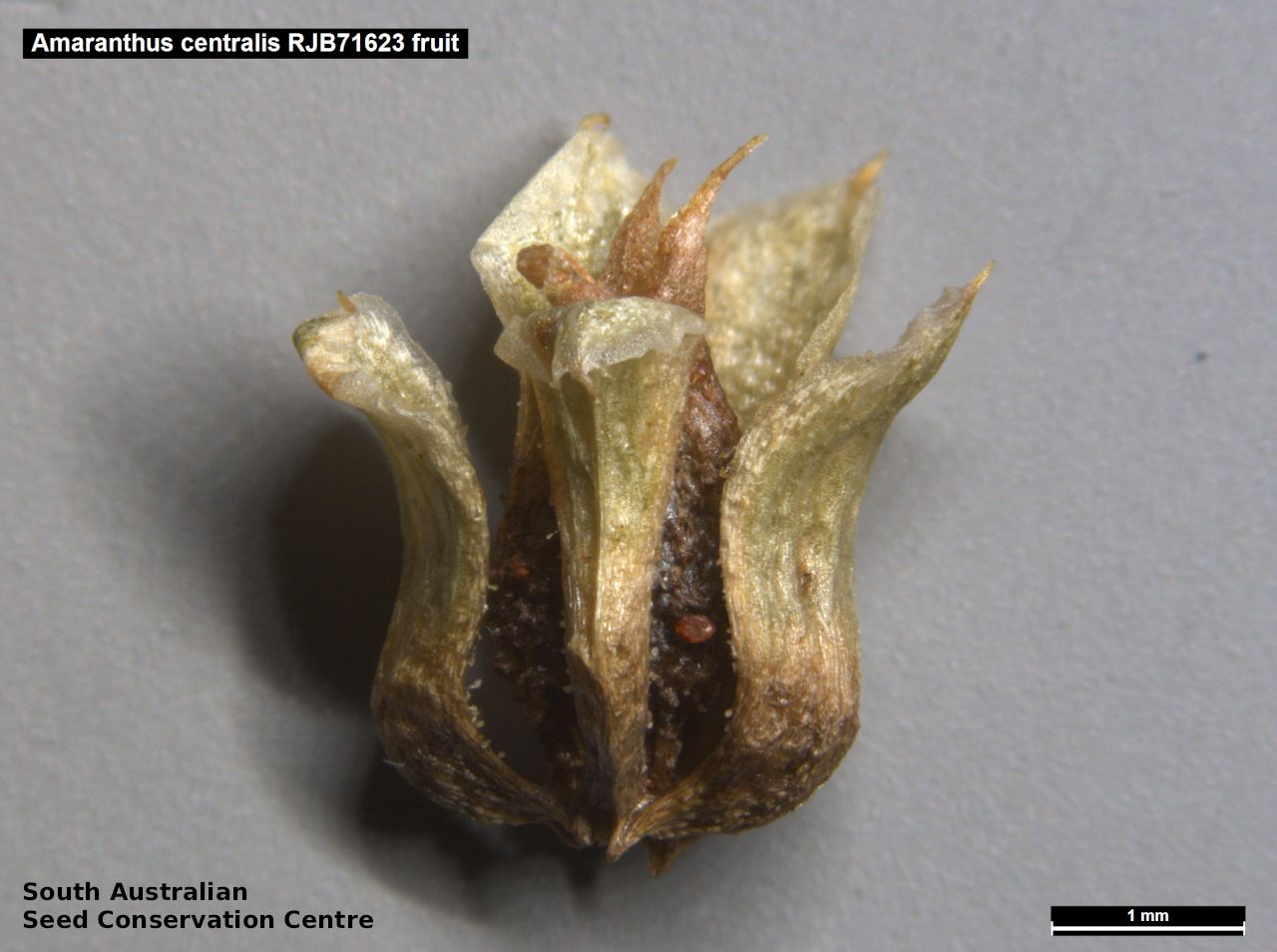
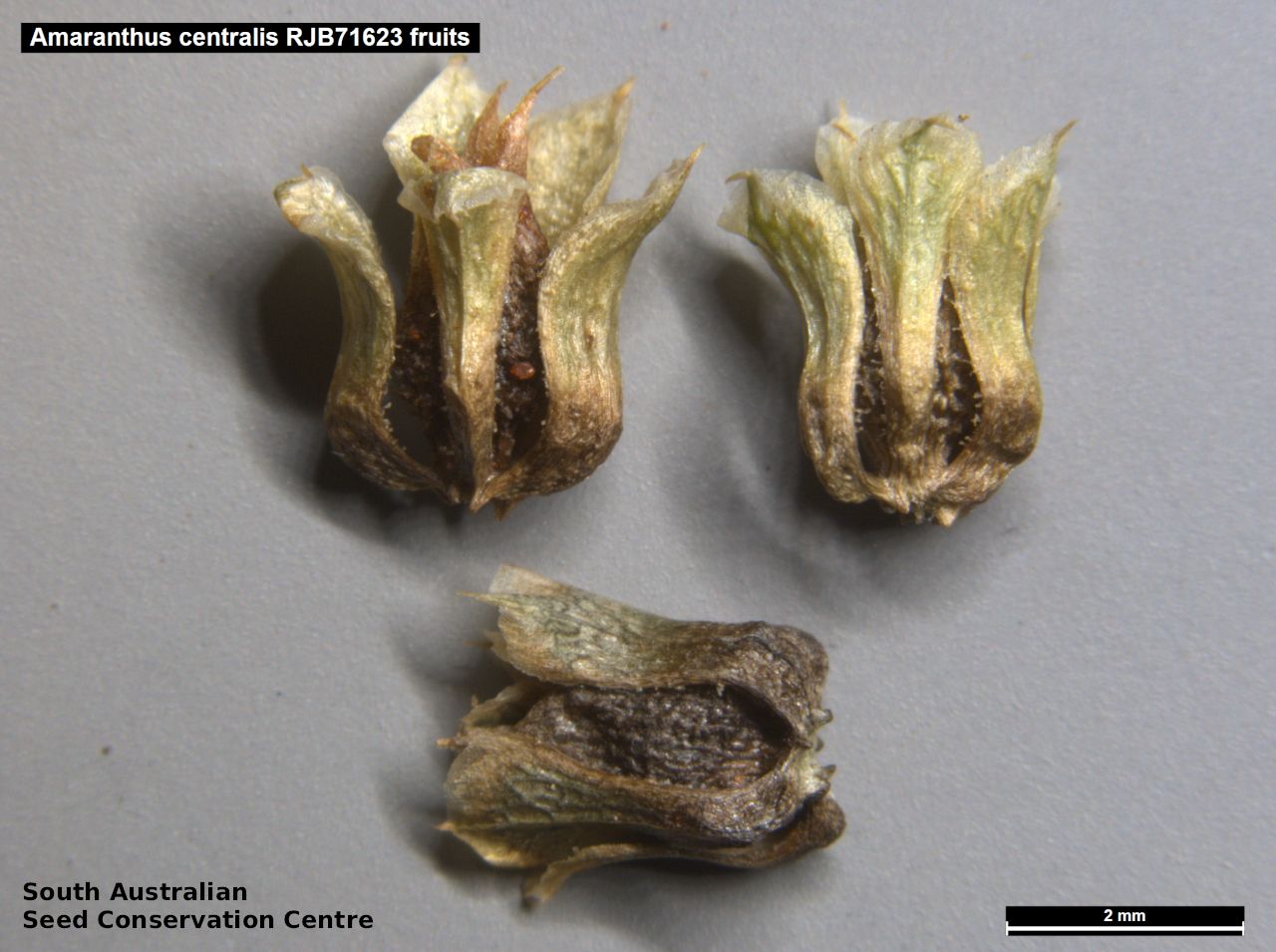
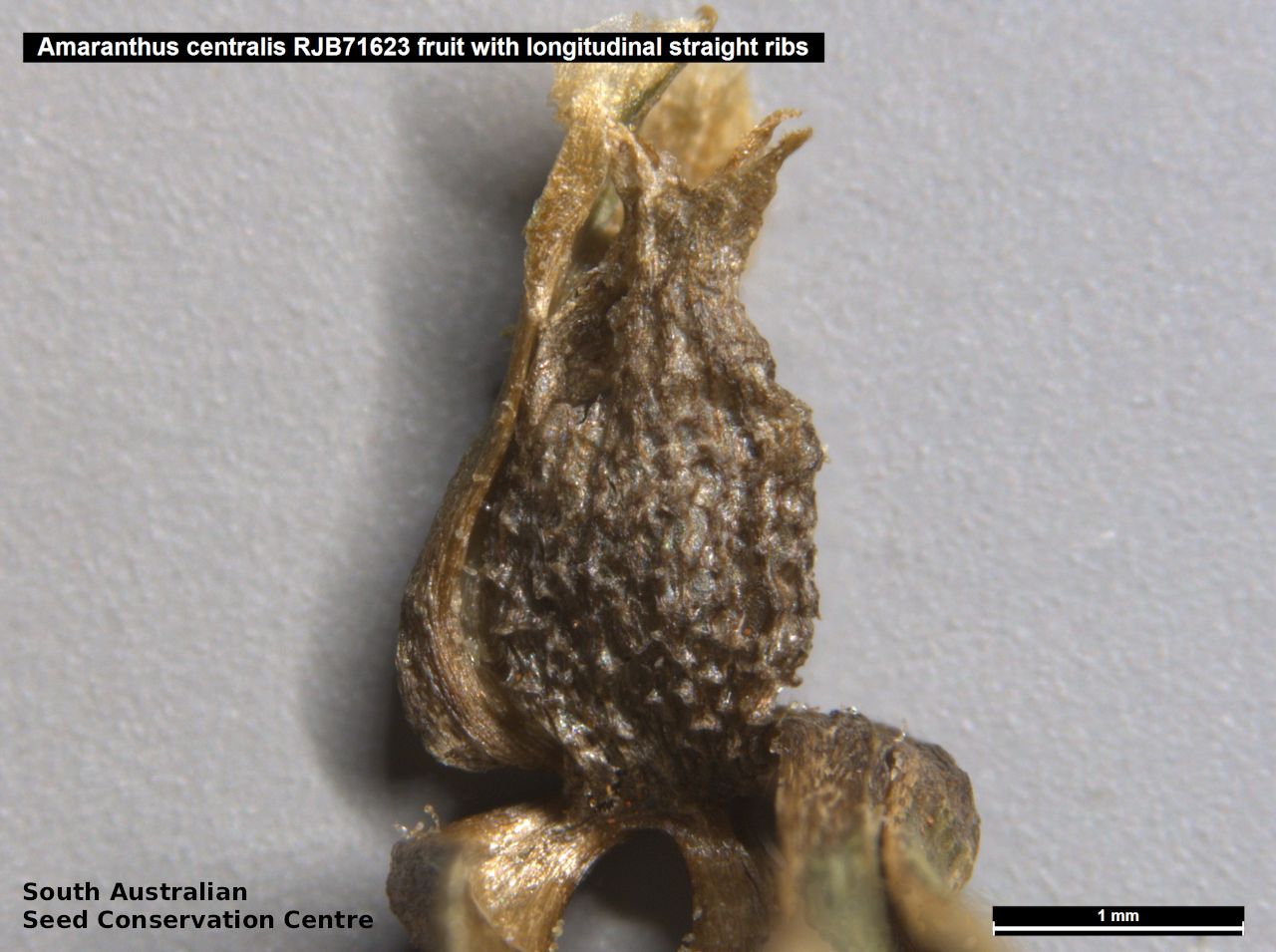
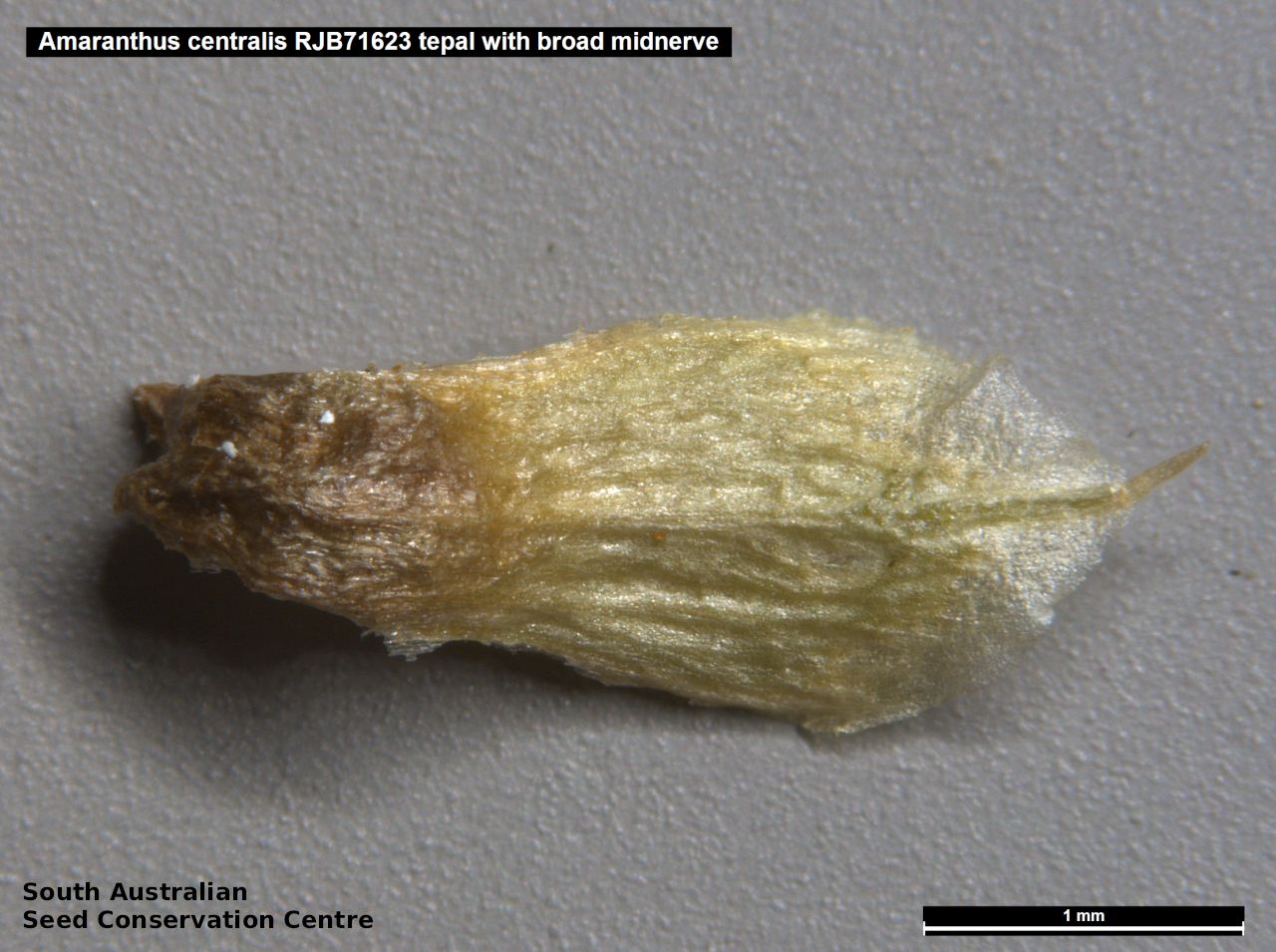
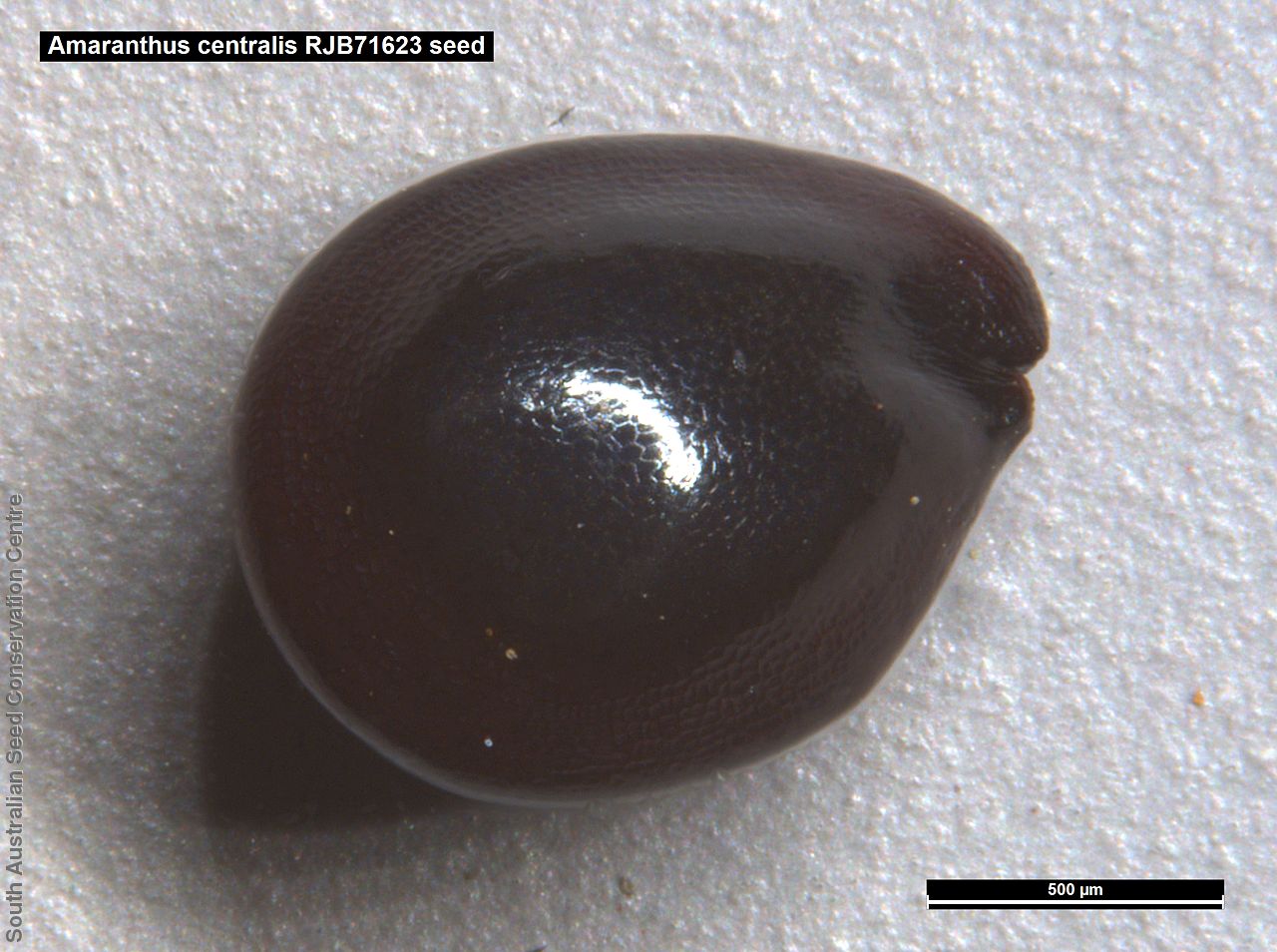
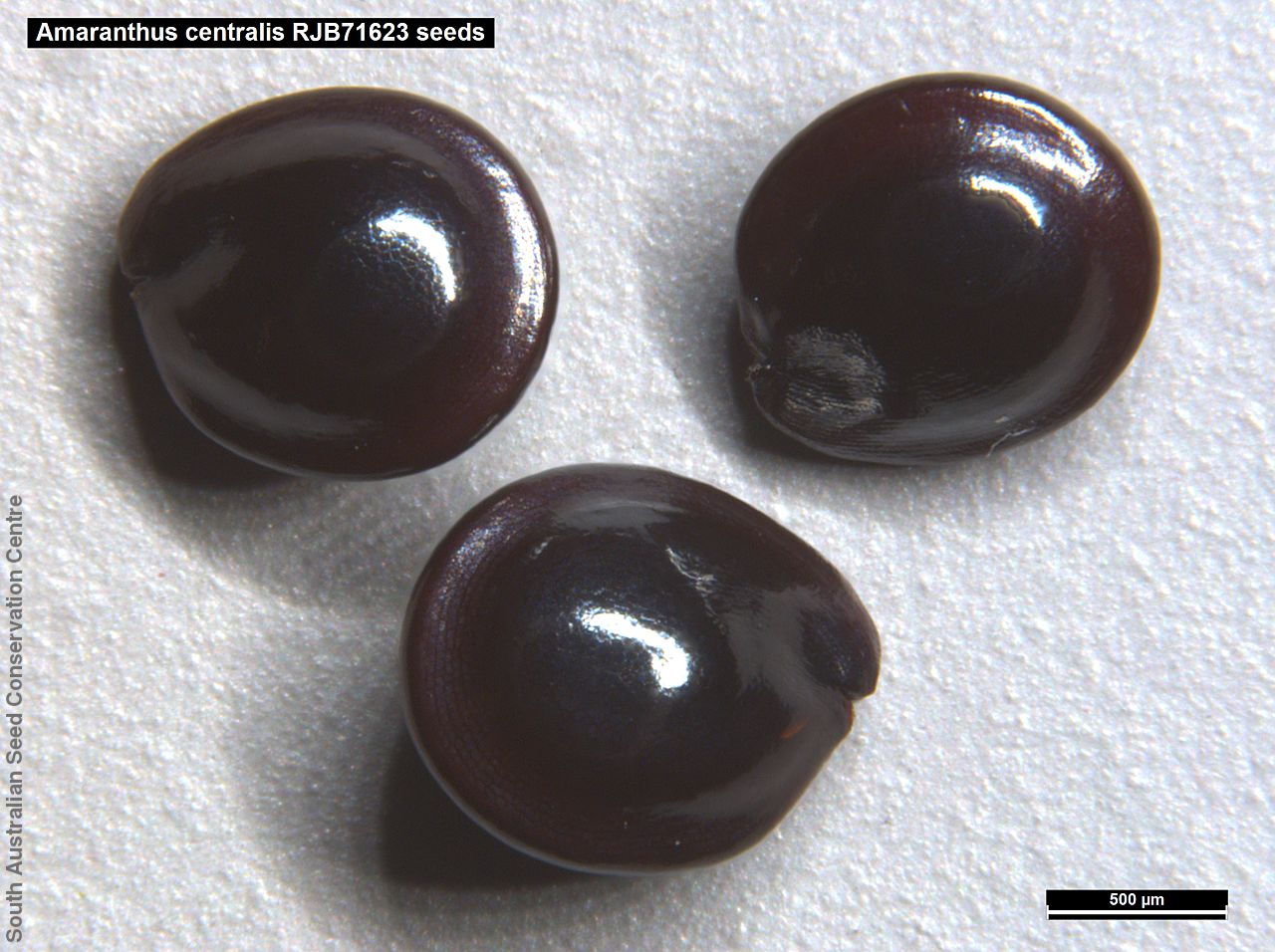


Prior names
Amaranthus sp. Todd River (G.Chippendale 482)
Etymology
Amaranthus from the Greek 'a' meaning not and 'marantos' meaning withering, a name used for an everlasting flower. Centralis from Latin meaning central or in the middle, may refer to where the species is found, mainly in the centre of Australia.
Distribution and status
Found in the far north of South Australia, growing on red sand in sandy or rocky ephemeral watercourses, sandy to clayey loam on creek banks and edges of permanent pools in eucalypt lined channels, Acacia shrubland, or open tussock grassland. Also found in Western Australia, Northern Territory and Queensland. Native. Uncommon in South Australia (or under collected). Rare in Western Australia. Common in the other states.
Herbarium regions: North Western, Lake Eyre, Flinders Ranges
NRM regions: Alinytjara Wilurara, South Australian Arid Lands
AVH map: SA distribution map (external link)
Plant description
Erect annual herb to 60 cm high, with angular and hairy stems. Leaves on petioles to 20 mm long, elliptic or ovate to 35 mm long and 17 mm wide. Flower-spikes axillary, globular clusters and sometimes erect terminal spikes to 60 mm long, with greenish male and female flowers present. Fruits are pale dark brown to black papery capsules to 3 mm long, with slightly raised longitudinal ribs, tepals with broad midnerve. Seeds are semi-flat, round black seeds to 1.2 mm across. Seed embryo type is peripheral.
Seed collection and propagation
Collect seeds between January and December. Collect mature capsules, those that are turning a pale straw colour and contain black seeds. Whole stem containing many clusters of fruit can be collected. Place the capsules/stems in a tray and leave to dry for two weeks. Then rub the capsules/stems gently by hand to dislodge the seeds. Use a sieve to separate the unwanted material. Be very careful as the seeds are very small. Store the seeds with a desiccant such as dried silica beads or dry rice, in an air tight container in a cool and dry place. From one collection, the seed viability was high, at 95%. Seeds are non-dormant, viable seed should germinate readily.
| Location | No. of seeds (weight grams) | Number of plants | Date collected | Collection number Collection location | Date stored | % Viability | Storage temperature |
|---|---|---|---|---|---|---|---|
| BGA MSB | 4,000 (1.9 g) 4,000 (1.9 g) | 17-May-2007 | RJB71623 North Western | 1-Aug-2007 | 95% | -18°C |
Number of plants: This is the number of plants from which the seeds were collected.
Collection location: The Herbarium of South Australia's region name.
% Viability: Percentage of filled healthy seeds determined by a cut test or x-ray.